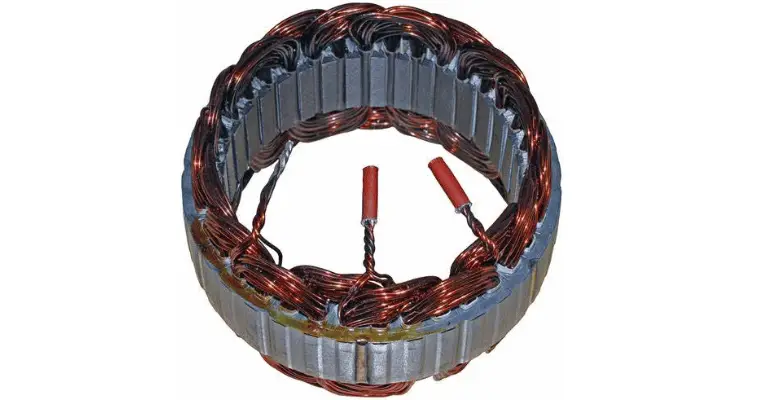Hitting the road on your motorcycle, feeling the wind in your face, and suddenly—everything goes kaput. Your ride’s vibe gets zapped by an electrical hiccup, and bam, you’re left wondering what in the world went wrong. Chances are, your motorcycle’s stator, the unsung hero of your charging system, decided it was time to take a break. And now you’re stuck with the big question: “How much is it gonna cost to fix this?”
Before you start sweating the numbers, let’s break down the nitty-gritty of motorcycle stator replacement costs. Whether you’re a veteran of the road or someone who’s still getting the hang of all things motorcycle, understanding the cost and what goes into fixing or replacing a stator is key. So, no need to rev up your engines—or anxiety—just yet.
We’re diving deep into the world of stator replacements, covering everything from how much you’ll likely shell out to whether you can tackle this as a DIY project. Ready to get charged up with knowledge and keep your motorcycle adventures rolling smoothly? Let’s jump into the electrifying details of sorting out your stator woes without breaking the bank.
Related:
– How To Tell If Your Stator Is Bad 101 (Full Guide)
– What Is A Rectifier On A Motorcycle? Well, Come Find Out!
So, How Much Does It Cost To Replace A Motorcycle Stator?
The replacement cost for a motorcycle stator can widely vary. On average, the cost to replace a motorcycle stator can range from $400 to $1,500. However, these costs can fluctuate based on several factors including the motorcycle model, the stator brand, labor costs, and the location where you’re getting the service done.
How Much Does A Stator Cost By Itself?
If we focus strictly on the cost of the stator part itself, without including labor fees, the price range tends to be more manageable. Generally speaking, you might expect to pay between $150 and $350 for a new stator.

Note that the price can still vary based on the motorcycle model and the quality of the stator. For instance, a stator for a Harley Davidson or a Suzuki GSX-R600 may cost more than a stator for other motorcycle models due to the complexity of their electrical systems.
What’s The Average Labor Time To Replace A Stator?
The labor time involved in replacing a motorcycle stator can also significantly impact the total cost. On average, it might take a skilled mechanic between 1 to 3 hours to complete the replacement. This time frame may depend on the motorcycle model and the mechanic’s experience and skill level.
However, labor costs can sometimes be a point of contention. For instance, some riders might find that they’ve been charged 3 hours of labor for a replacement that should have taken less than an hour according to the manufacturer’s guidelines. In such cases, it’s important to discuss labor times and costs upfront with the mechanic or shop to avoid misunderstandings or disputes.
Before moving forward to replacement steps, you might need this first: How To Test A Stator On A Motorcycle (Like A Pro) 101
Can You Replace A Stator By Yourself? Yes, Here’s What To Know
For those who are mechanically inclined and comfortable with doing their own motorcycle maintenance, replacing the stator by yourself is a feasible option. This DIY approach can save you a significant amount in labor costs. However, it’s crucial to have a good understanding of your motorcycle’s electrical system and to follow a detailed guide or tutorial to ensure the replacement is done correctly. Here’s a quick overview and step-by-step guide:
Before you start, make sure you have the necessary tools and parts, including a new stator that fits your motorcycle model. You’ll also need a multimeter to check the voltage and ensure the new stator is working properly after installation.
Quick Overview of Stator Replacement Steps
Here are the basic steps you might follow to replace a motorcycle stator:
- Disconnect the Battery: Start by disconnecting the battery to ensure safety while working with the motorcycle’s electrical system.
- Remove Necessary Components: Depending on your motorcycle model, you might need to remove certain components to access the stator. This could include parts like the side cover or the gas tank.
- Remove the Old Stator: Once you’ve accessed the stator, carefully remove it from the motorcycle.
- Install the New Stator: Install the new stator in the same position as the old one. Ensure it’s securely mounted.
- Reconnect and Test: After installing the new stator, reconnect the battery and start the motorcycle. Use a multimeter to check the voltage and ensure the new stator is charging the battery properly.
- Reassemble the Motorcycle: If everything checks out, reassemble any components you removed earlier.
Remember, these are general steps and the exact process can vary depending on your motorcycle model. Always refer to your motorcycle’s service manual or a trusted guide for specific instructions.
Wrapping Up
While the cost of replacing a motorcycle stator can be significant, it’s a necessary expense to ensure your bike’s optimal performance. Whether you choose to do it yourself or hire a professional, being informed about the process and costs can help you make the best decision. Safe and happy riding!